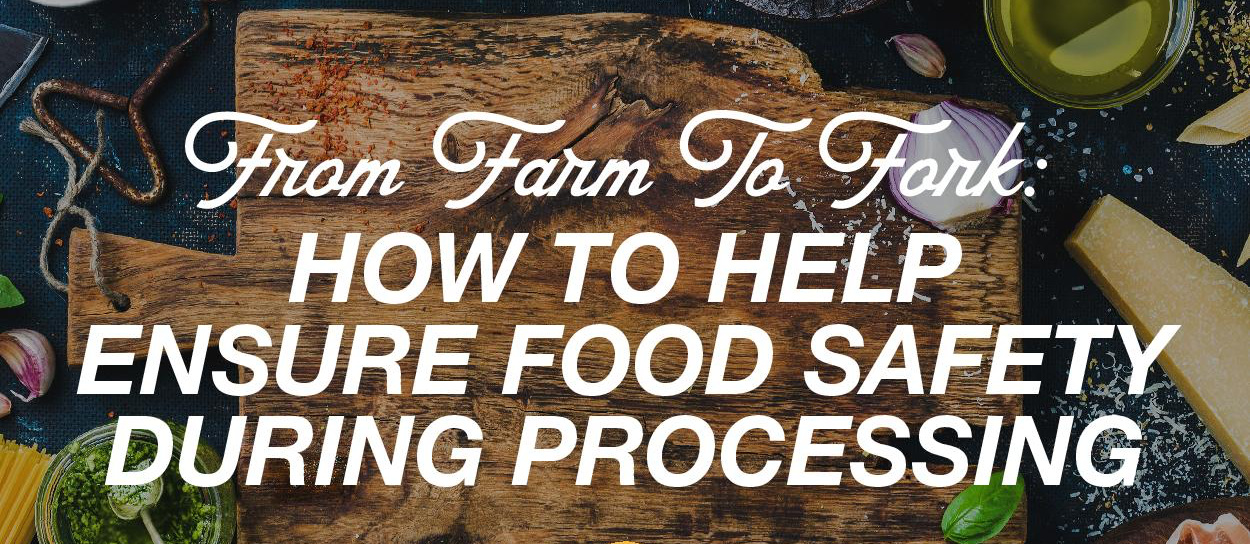Food Safety During Processing: Best Practices (Infographic)
2 Min Read
For businesses operating in the food industry, it’s critical that food products are created in a safe and hygienic environment. In the absence of proper hygiene and safety protocols, the entire food chain — from the farmer who grows the produce to the consumer who eats it — is compromised. Proper food safety practices may help prevent numerous mishaps, such as foodborne illnesses and damage to your restaurant’s reputation. Read on to learn about proper methods in which to keep your food safe during processing and preparation.
There are many ways in which a safe food product can turn hazardous. A lack of hygiene among works in processing plants is a contributing factor. Workers can carry pathogens internally as well as on their hands, skin and hair. Employees must maintain a high degree of personal cleanliness and refrain from going to work if they are ill to prevent food contamination. Proper usage of protective gear including caps, gloves, masks and footwear must be followed. Personal hygiene and excellent sanitation policies are critical to maintaining food safety.
Pests may infiltrate various food processing facilities or restaurants, depending on what sort of food is available for them. Birds, flies, rodents and cockroaches may contaminate produce and spread diseases. Rodents also cause costly damage to machinery and fixtures.
For these reasons, it’s imperative to invest in pest control monitoring. An effective pest control program is vital for supplying safe food to your customers and consumers. You can also prevent pests from invading your establishment by cleaning the facility regularly, conducting inspections, sanitizing equipment and making sure there is no expired food rotting.
If food waste is accumulated, it might attract pests to areas where food scraps are stored. This can pose a risk to food safety. However, pest infestations can be prevented with the provision of suitable containers and secure waste storage areas. Be sure to establish adequate procedures for waste removal on a regular basis to reduce the risk of contamination of food, equipment and products.
Incorporation of hygienic design into your food preparation stations may prevent development of pests and microbiological hazards for increased food safety. Complex designs are susceptible to cross contamination. A sanitary design includes distinct hygienic zones, room temperature and humidity control, integrated sanitation, and more. An easily cleaned kitchen establishes a firm foundation for a sanitary environment.
For more tactics on safeguarding food safety during processing, take a look at the accompanying infographic by Key Technology.


